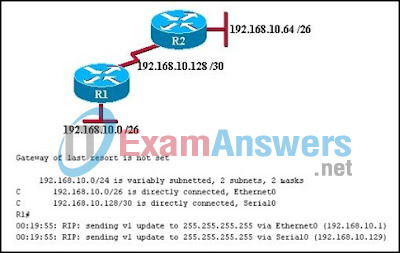Refer to the exhibit. Both routers are configured using RIPv1. Both routers are sending updates about the directly connected routes. R1 can successfully ping the serial interface of R2. The routing table on R1 does not contain any dynamically learned routes from R2, and the routing table on R2 shows no dynamically learned routes from R1. What is the problem?

- Subnetting is not supported by RIPv1.
- One of the routers needs a clock rate on the serial interface.
- The serial link between the two routers is unstable.
- VLSM is not supported by RIPv1.
Exam with this question: CCNA Discovery 3: DRSEnt Chapter 9 Exam
Please login or Register to submit your answer
